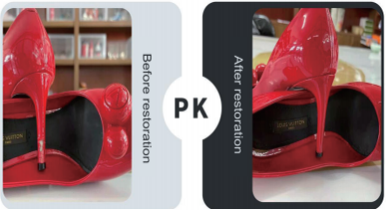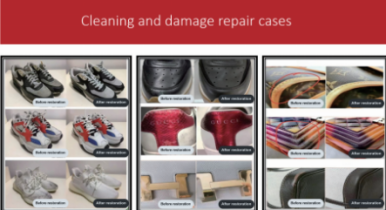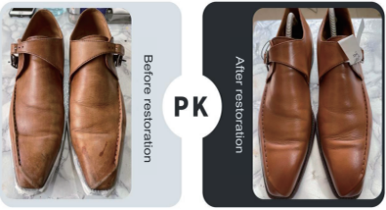Edit Content
First, know the material of your leather goods Before starting any cleaning or maintenance procedures, you need to determine what material your leather goods belong to: Full-grain leather: the highest grade leather, the surface of which has not been treated too much, is durable but needs careful maintenance. Scrubs/suede: The surface has a fluffy texture, which is easy to absorb dust and stains. Patent leather: the surface has a glossy coating, which is easy to leave scratches. Artificial leather: unnatural material, with different cleaning methods. Vegetable tanned leather: Leather tanned by natural plants will change color with time.
Second, the daily cleaning and maintenance steps Basic cleaning Dust removal: use a soft brush or microfiber cloth to gently remove surface dust. Special cleaner: Choose a professional cleaner that matches the leather type, and test it in an inconspicuous place first. Gently wipe: dip a small amount of detergent in a clean soft cloth and gently wipe it in a circle. Natural drying: Avoid direct sunlight or heat source, and let the leather products dry naturally.
regular maintenance Leather nourishing: Use special leather maintenance oil or cream every 3-6 months. Waterproof treatment: use waterproof spray (except sanding skin) to increase the protective layer. Shape maintenance: when not in use, keep the shape of the bag with fillers to avoid deformation.
Third, common problems and repair methods
1. Scratch treatment Shallow scratches: Use special leather repair cream or colorless shoe polish to gently fill them. Deep scratches: professional dyeing may be needed to repair them.
2. Water stain treatment Absorb immediately with a clean absorbent cloth. Use leather care products after natural air drying. Never use heat source to accelerate drying.
3. Oil stain treatment Sprinkle corn starch or talcum powder to absorb oil. Let it stand for several hours and then gently brush it off. Stubborn oil stains need professional treatment
4. Color change treatment Avoid further sunlight exposure. Professional leather colorists can change the color as a whole.
Fourth, professional repair services When encountering the following situations, it is recommended to seek professional leather repair services: Serious structural damage (e.g. broken handle) Large area dyeing or fading Lining damage Deep restoration of expensive luxury leather goods Professional repair usually includes: Deep cleaning Complementary color restoration structural strengthening Hardware replacement Edge oil repair
five. Suggestions for long-term storage Clean and maintain before storage. Use breathable dust bag (not plastic) Keep in a cool and dry place. Avoid indentation caused by stacking. Periodically take out the inspection status
Sixth, the balance between DIY and professional services Although daily maintenance can be done by yourself, it is recommended that leather goods with high value or serious injuries be handled by professionals. Improper home repair may cause irreversible damage, but it will increase the difficulty and cost of later repair. Through proper cleaning, maintenance and timely repair, your leather goods can be kept in good condition for many years, and even become a classic item that can be passed down. Remember, prevention is better than cure, and regular maintenance is the key to prolong the life of leather goods.



© 2025 AGTG